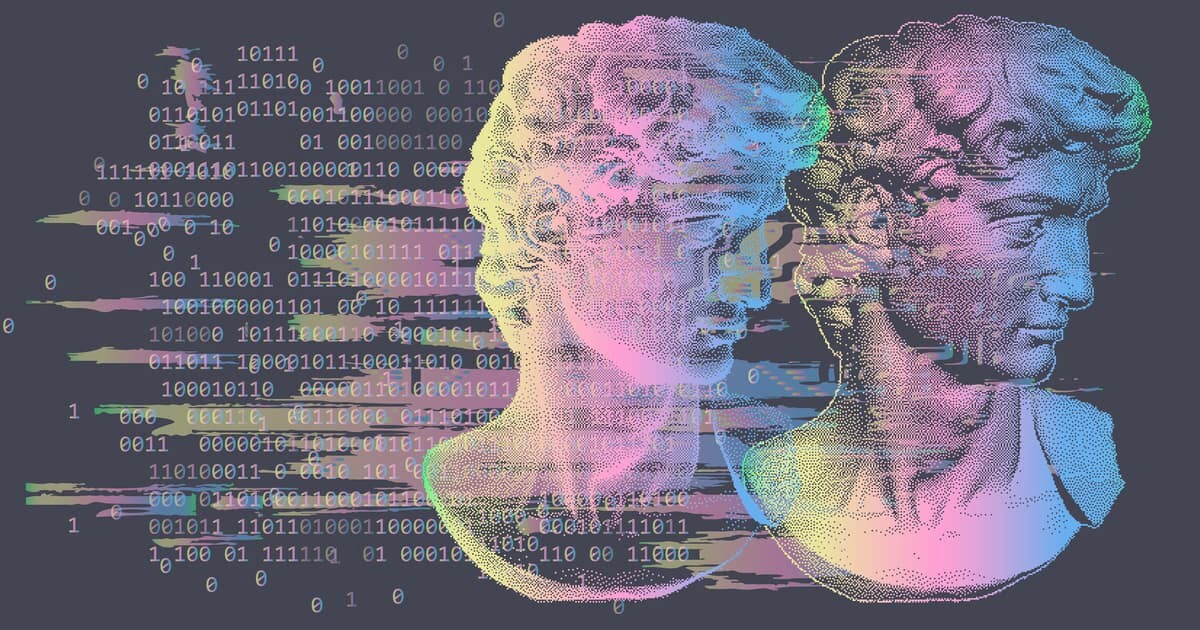NFTs & The World Of Art Today

What Is an NFT?\
Non-fungible tokens are unique, identifiable digital assets whose exchange between the creator and the buyer, via the financial transaction of a cryptocurrency such as ethereum, is logged for anyone to view.
*NFTs aren't just the asset itself – the GIF, JPG, MP3, etc. – but also a digital certificate of authenticity for an increasing number of collectibles ranging from art and music to trading cards.
How Do NFTs Work?
The majority of NFTs reside on the Ethereum cryptocurrency’s blockchain. Similar to Bitcoin, Ethereum's blockchain creates permanent digital records of all transactions using that cryptocurrency. And it also creates an irrefutable ledger of NFT transactions.
The creator of the NFT retains the copyright for it, as well as the right to duplicate it as many times as they want. The creator may produce multiple copies of the original – and if the buyer of the NFT wants to make copies, they need to get permission from the creator – and each is considered a unique NFT.
***Similar to physical collectibles, replications will not be as valuable as the original, and supply and demand will impact how much the NFT is worth; And in some cases, the creator will receive royalties each time an NFT is sold, though there is currently not a universal system in place. For instance, holders of EulerBeats Originals – an NFT audio-visual platform – get a set 8% of the print price of each copy sold of their original token.
So, when you buy an NFT, what are you actually buying?
In the bricks-and-mortar art world, it is common to issue a certificate of authenticity when a collector purchases an unsigned work. Most NFTs function like certificates of authenticity, only they rely on the cryptographic protocols of the Ethereum blockchain for their authority instead of an official paper document. This high-tech token is unique and proves your ownership, but the thing you own – usually a JPEG, GIF or MOV – remains as copyable as ever. The overwhelming majority of NFTs are relatively conventional as items of visual culture: digital drawings or animations of the sort that have existed for many years. Some, like CryptoPunks (released in 2017 and one of the first NFTs on the Ethereum blockchain), are intentionally low-fi and full of nostalgia for the early days of the internet.
What’s worth getting when shopping for NFTs?
NFTs can really be anything digital (such as drawings, music, your brain downloaded and turned into an AI), but a lot of the current excitement is around using the tech to sell digital art. People have even started selling themselves as an NFTs!
Do people really think this will become like art collecting?
I’m sure some people really hope so (*like whoever paid almost $390,000 for a 50-second video by Grimes or the person who paid $6.6 million for a video by Beeple). Actually, one of Beeple’s pieces was auctioned at Christie’s: https://www....ys-69-million
Beeple, ‘Everydays': The First 5000 Days. Sold for: $69.3 million — Photo of the jpg seen above.
And guess what? - This Beeple video ended up selling for $69 million, which, by the way, is $15 million more than Monet’s painting Nymphéas sold for in 2014.
So this is where it gets a bit awkward. You can copy a digital file as many times as you want, including the art that’s included with an NFT.
But NFTs are designed to give you something that can’t be copied: ownership of the work (though the artist can still retain the copyright and reproduction rights, just like with physical artwork).
To put it in terms of physical art collecting: anyone can buy a Monet print — But only one person can own the original.
NFTs have a feature that you can enable that will pay you a percentage every time the NFT is sold or changes hands, making sure that if your work gets super popular and balloons in value, you’ll see some of that benefit.
Is every NFT unique?
Every NFT is a unique token on the blockchain; But while it could be like a van Gogh, where there’s only one definitive actual version, it could also be like a trading card, where there’s 50 or hundreds of numbered copies of the same artwork.
Who would pay hundreds of thousands of dollars for what basically amounts to a trading card?
That’s part of what makes NFTs so messy. Some people treat them like they’re the future of fine art collecting (think of it like a playground for the mega-rich), and some people treat them like Pokémon cards (where they’re accessible to normal people but also a playground for the mega-rich).

